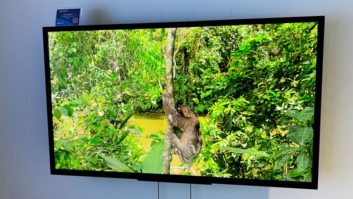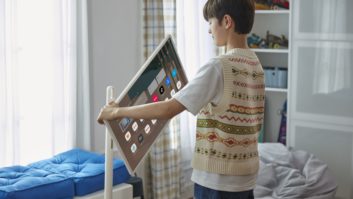As promised, I had mentioned that this blog would continue to explore the Nature of Color. In this blog, I will discuss how a motion picture is mastered and then converted to various media for theaters and consumer displays.
The below graphical representation demonstrates basic building blocks of the motion picture mastering process and the process
for conversion to home video.
There is a process called the Digital Intermediate Mastering process. The Digital Intermediate is used for producing movies for various media as shown below. Digital Intermediate Process provides for multiple input elements, known & unknown, multiple processes – frequently unique to facility and unique masters for each platform.
As far as mastering environments and post houses, creative artists go to a lot of trouble making the material look right in a standardized environment.
There are three primary cinema color spaces used in the digital intermediate processing:
• 35mm film – Well understood & standardized, within “acceptable limits”
• Digital Cinema – P3 (XYZ) – Good color rendition, standardized, still room for improvement in conversions, rendering from various sources
• Rec 709 – well understood, standardized, limited in expression, color depth
By contrast, there a variety of television mastering standards and methods that are used by post houses to create masters for various home media. They include:
• Display has rec 709 primaries
• Display luminance is ~ 26 fL
• Ambient luminance is 1% (0.26 fL) on wall behind monitor
• Gamma is CRT gamma = 2.5
• Digital signal path to monitor
• System calibrated ~ daily
• Repeatable and traceable worldwide.
During the process, color correction is applied for the various viewing environments and platforms. There are reference displays that are used for this process, and they each have their advantages and disadvantages. The types of reference displays used by post production houses are:
• CRT BT709 Reference Monitors
– defacto standard, but no longer available
• LCD 709 Reference Monitors –
– problematic, limited contrast, poor black, limited angle, calibration issues
• Plasma –
– problematic, better contrast than LCD, difficult to calibrate, inconsistent between models
• DLP
– Good color & contrast, can be calibrated, space issue
The interesting point to note here is that there is clearly a mismatch between the mastering process and what today’s consumer displays are capable of rendering.
Today’s consumer displays have:
• Wide gamuts
• High brightness
• Varying black levels & dynamic range
• Varying gamma curves
• Limited internal color management
• Multiple display technologies with different capabilities & artifacts
Below is a comparison of the clear mismatch between what is actually mastered and a consumer displays capabilities:
The purists would argue that “natural mode” is therefore necessary in consumer displays to accurately reproduce the “creative intent” of the mastering process. The problem is that no consumer that I know of watches TV at a brightness level of 80nits.
What if you can get the “creative intent” of the mastering process for cinema or home platforms and gain the vibrancy of colors and brightness that is necessary for a typical home environment?
There is only one display technology that is commercially available that can answer this question. That technology is Laservue.T












